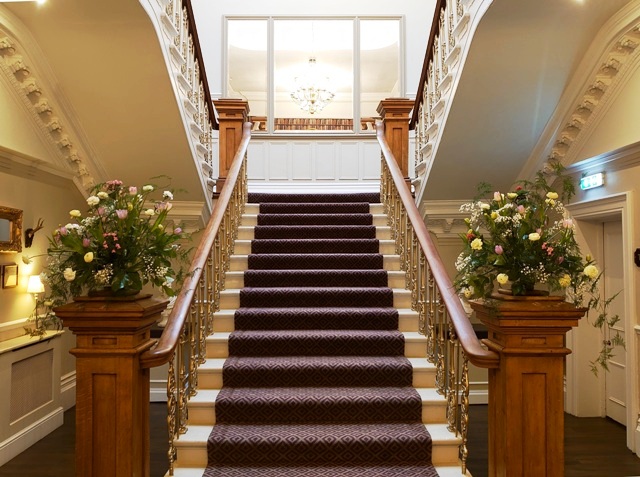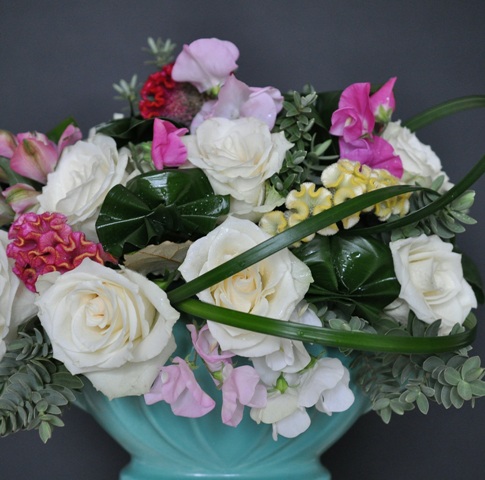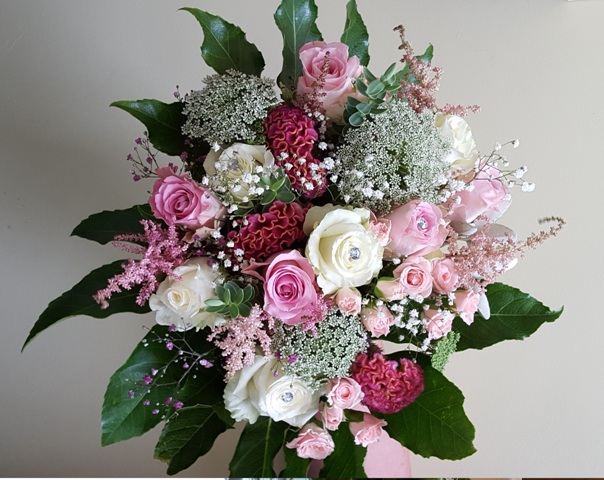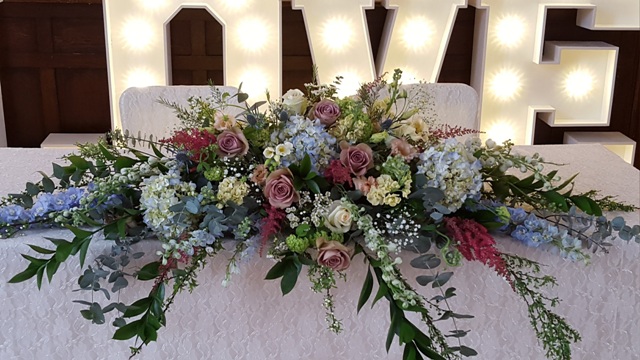ALL
MEETINGS CANCELLED UNTIL FURTHER NOTICE
WE WILL BE BACK IN BUSINESS AS SOON AS IT IS SAFE TO DO SO.




Flowers in Edgworth Pat has taken these pictures of some of the planters which were provided by the Society with NT Parish Council and maintained by local residents and businesses. They have been admired by many and really lift the spirits in these troubled times.
Best wishes to you all from the Committee. Hope you are all keeping well and not too bored in isolation. Personally, I am quite enjoying being able to spend as much time as possible in the garden instead of the usual hour here and there between different commitments. I suppose the glorious weather has helped, but that seems to have come to an end now so I am able to catch up with other things which have been neglected, and the garden certainly does needs the rain.
In normal times some of us would have been visiting Erddig House and Chirk Castle on Saturday 2nd May. Disappointing but we can always re-arrange for another time. Let’s hope that the Late Summer trip will go ahead in September, the plan was to visit Harewood House and Dove Cottage Gardens but who knows if this will now be possible. When will life return to normal? <
Irene
Sam Camps from Rawtenstall would have been our speaker in April. He is the third generation of a bee-friendly gardening family.
Sam was going to talk to us about Green roofs and Wildflower borders – having a strong belief that our gardens are habitats for our diverse insect and animal life. He says that for a lot of us, gardening used to be about controlling nature but his ethos is to work alongside nature and to realise that it is vital that we encourage the presence of bees, butterflies, hedgehogs etcAs an accredited Wildflower Turf installer, he strives to pass on an understanding of, and the necessity for, wild flowers in our borders and meadows. Having been trained in establishing green roofs, every bit of garden space is utilised which adds beauty to an otherwise mundane shed, benefitting wildlife which is unaffected by foot traffic.
His talk has had to be postponed, but he is looking forward to being with us in 2021
Pat
A
Special House Guest
A
large cardboard
box has languished in my house since Christmas 2018,
being regularly moved “out of the way” to somewhere
equally in the way. This was always accompanied by under-the-breath,
guilty muttering of “must do something with this
sometime”. At the end of March this year I stopped
procrastinating about where to put it and installed the beautifully
made bird box with a built-in camera that I’d bought 16
months earlier.
Before
buying it I’d planned to fasten it to the new fence at the
bottom of the garden but then realised that despite being 6’
high the box would be vulnerable to attack by squirrels and cats if
near the top and to ground-based predators lower down. Also
it would be exposed to the afternoon sun - boiled eggs and
roast bird was not what I wanted!
Instead
I mounted it about 10 ft up the NE wall of my house, close to the
protruding chimney flue where it would be sheltered from wind and get
the morning sun. This was obviously a des-res because it took about a
week for a Blue Tit to take up residence.
The
female takes full charge of house hunting and furnishing, the male bird
takes no part in this! For the last three weeks she has been busily
flitting in and out, carrying nesting materials; bits of fern, moss and
hair. It’s been fascinating to watch as she builds
up nesting materials over several visits only minutes apart and then
spends more time carefully arranging them to form a cup shaped nest. I
assume she is weaving them into place but does this with her head out
of sight, deep in the pile. She starts at first light and works like
this until about 9pm She then spends about an hour rotating in the cup,
using her feet and beak to shape it as she wants it.




After fluffing up her feathers a well deserved sleep follows – all that is visible is a gently rising and falling ball of fluff – and no audible snoring! Very soon I expect she will start to lay eggs, usually one per day and possibly up to 16. I hope all goes well and I can give updates and more pictures in the next few emails.
Phil
A Day in the Life of a Wedding FloristWell
to start at the very beginning as the song goes ... In the
‘80s I took a City & Guilds Flower Arranging course -
as it was known then. The course was entirely female, the
majority of the ladies being the age I am now. Their plant
identification and knowledge was far greater than mine at the time. I
hung on their every word! Since then I have completed many
design courses over the years, worked in the floristry industry for 10
years in central Manchester and now work from my home workshop as a
wedding florist.
Floristry and gardening have always been my passion. In the
early years it was all triangles, Hogarth curves and crescents - all
rather stiff formal styles. In the last 30 years design has
been very much influenced by the northern Europeans (see master florist
Gregor Lersch) which has turned formality on its head producing a much
more relaxed,natural look, with the traditional vintage look still
going strong. Floristry has now become big business globally, in the UK
dominated by such names as Paula Pryke, Zeta Else, Simon Lycett to name
but a few. Check out their work online for colour,
imagination and unusual use of material. Who would have
thought back in the days of Constance Spry using herbs, succulents or
even artichokes and vegetables in floral design?
For most people a day in the life of a wedding florist would suggest a
rather breezy occupation. I promise the reality is very
different. For an average wedding once you have met with the
bride, visited the venue sometimes multiple times, discussed with the
bride pieces and plant material, created a spreadsheet for numbers and
costings, the real work then begins! Flowers and foliage are ordered
several weeks in advance from your friendly wholesaler.
Material is collected by the florist early in the morning as these guys
and gals work anything from 2am to meet the large chiller containers
coming from Holland, I am sure you will have seen them on your local
motorway. Wholesalers are closing by 10am, they are a hardy
lot!
The Dutch flower market is a huge industry they are not only importers
but huge growers (particularly of bulbs, especially spring
flowers). They also receive flowers grown from all over the
world, e.g. roses from Columbia and Kenya, proteas, lilies
chrysanthemums and eucalyptus from South Africa, orchids from Japan. We
have all enjoyed spectacular international displays of their native
flora at Chelsea in years gone by. When I first started
working in floristry the UK flower growing industry was very small and
niche now ‘stems’grown in the UK accounted for 14%
of £865m of flowers (and presumably foliage) sold in Britain
in 2019, an increase from the previous year. Influenced by
Royal Weddings and inparticular ‘the English
Look’
created by Simon Lycett for William and Kate’s wedding in
2011. Who would forget the beautiful avenue of maples and hornbeam
trees in Westminster Abbey.
Homeward bound with a car full of flower/foliage, plus previously
selected containers for large pieces, bridal and guest tables etc. is
where the real fun starts, usually 3 to 4 days before the big day. The
dishwasher is a great help! The garage workshop is prepped
with all flower buckets beached, cleaned and filled with clean water /
flower food to ensure your precious bundles and boxes and importantly
the finished products will stay fresh for at least a week.
Your ‘best friends’ for longevity include
carnations, orchids and lilies. Most stems are purchased in
bunches of 10-18 depending on the flower. All stems are then
‘conditioned’: stem ends cut, lower leaves and rose
thorns removed. Stems are then left to take up water for at
least 24 hours. All oasis foam soaked.

 |
I
tend to start with the larger pieces such as large pedestals first,
then to buttonholes/corsages and lastly the bouquets on the day before
the wedding. Each completed piece is water sprayed several times
daily. Buttonholes completed and name tagged – this
comes from experience of trying to find Aunty Flo in a room full of
people! I prefer to attach buttonholes and corsages to the
relevant guest as nothing is more annoying when looking at
photo’s later to find them hanging by a thread pinned on the
wrong side (left facing up / men, right facing down / women).
Gone are the days of a carnation and bit of fern, buttonholes have
become more elaborate and thus heavier so fitting securely is
important.

  |
Set
up day - time to pack the car for delivery. On arrival
you can tweak as needed. Usually bouquets, buttonholes and
corsages are delivered on the morning of the wedding.
You can then head home for a bubbly bath and then feet up - that is
before you are back at the venue to clear up!
Providing wedding flowers is as much about creativity as it is a
practical exercise in organisation and logistics to deliver a product
successfully and on time to a happy customer!
 |
Angela
My
Favourite
Garden - Have
you visited a garden, large or small, and fallen in love with
it. Why not tell us about it in your own words (around
300-400). Explain what you liked about
it, maybe what you didn’t like. Where it is, is it
open to visitors? (we can only dream about that one at the
moment). We can
add photographs if you can provide a few or
we can find pictures if they are on a website.

Barbara’s
Springtime Garden
Are
you missing our monthly lectures and looking for something to
do?
Here
are a few websites offering Tutorials..............
- Veg Tutorial Charles Dowding www.charlesdowding.co.uk (No dig organic gardener).
- Videos posted weekly on Sunday evenings in IOM www.lovelygreens.com (gardening and more)
- Did you join us on the 4-day holidays a few years ago when we visited Sarah Raven’s home and looked around her garden. It was stunning. Why not explore her website for inspiration? www.Sarahraven.com
And now for some Retail Therapy and a way of helping the Retail Garden Industry to survive this crisis
- Barbara Kenny has been using this site https://www.gardenbargains.com which have a lot of plants and garden products at low prices. You can pay a £10 annual membership fee which then gives you 10% of every order
- Barbara has also discovered a provider of birdseed and other wild products that is very good value and quick delivery. Here is the link the link https://www.ivelvalleybirdfood.co.uk ">
- Angela Swallow has passed on this information received from a friend : "Lovania" & "LS Systems" are family run horticultural businesses based in Tarleton.
- The former grows & produces vast numbers of plants for garden centres& Aldi. You may also have seen their plants on TV as they supply plants used in the programme Love Your Garden The website is www.lovegardeningdirect.com">
- The latter business sells horticultural supplies including composts, aggregates, tools & irrigation. LS systems is also operating a mail order service for their products. They have a very wide range of horticultural supplies including organic pest controls of nematodes for things like slugs & vine weevil. & a wide range of composts, topsoil & fertilisers & peat free products. Again, their prices are very competitive. They will offer a click & collect service, by arrangement, for larger orders from their premises in Tarleton. Their website is www.lssystems.co.uk
Remember, please tell us about ‘A Garden You Love, or any stories / ideas to share with other members. 3-400 words (or less) would be really good. I will put them in a future e-mail message.
KeepWell
Irene
